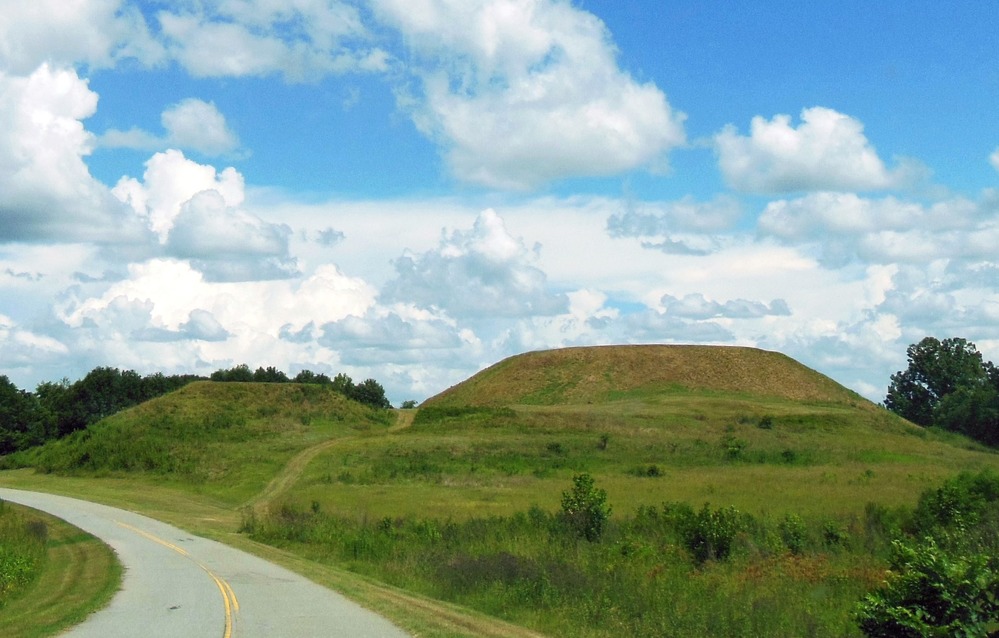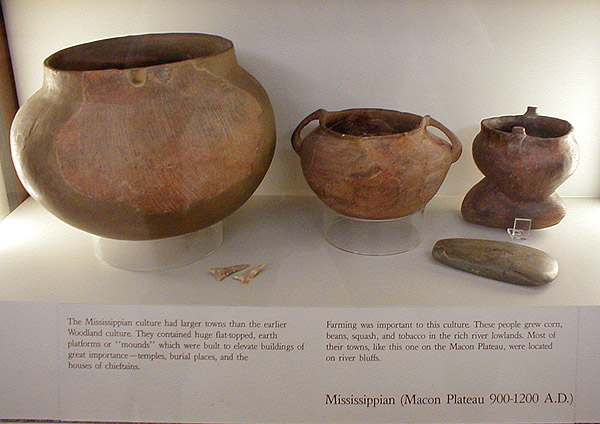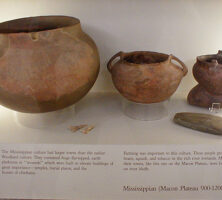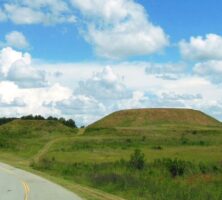Ocmulgee Mounds National Historical Park consists of a large and impressive group of mounds located along the fall line of the Ocmulgee River on the northeastern edge of Macon.
Although there were many different periods of occupation at Ocmulgee, the most prominent one began around 800 A.D., in the Early Mississippian period (A.D. 800-1100), and lasted for three centuries. During that time the occupants, who had emigrated from Tennessee or farther west, built many flat-topped earthen mounds, council chambers, and defensive structures in the mile-square town. Archaeologists know that they were immigrants because their pottery was completely different from that of the other people living in central Georgia at that time, but identical to pottery found on sites northwest of present-day Georgia.

Between 1933 and 1941 the largest archaeological excavations ever undertaken at any site in Georgia were carried out at Ocmulgee by Works Progress Administration (WPA) workers, who were guided by archeologist Arthur Kelly. Ocmulgee’s 2,000 acres, in fact, made up the most extensive excavation in the country. The site had been badly damaged by two separate nineteenth-century railway cuts through the center of the town, but Kelly still recovered an incredible wealth of information about Mississippian life in central Georgia. The crew discovered a unique and magnificent council house floor, and they built a protective roof over it. This in-place archaeological exhibition is one of the most interesting and important in the entire eastern United States. The summit of the largest mound, at the southern end of the site, offers a stunning view of the Ocmulgee River valley to the south—a large flood plain where the inhabitants grew corn. The Ocmulgee site was abandoned by about 1100 A.D., and the fate of its inhabitants is still a mystery.

In 1934 the U.S. Congress designated 2,000 acres to be made a national park, but when ultimately signed into law in 1936 by U.S. president Franklin D. Roosevelt as a national monument, only 678 acres fell under federal protection. In 1997 the Ocmulgee Old Fields was designated by the National Register of Historic Places as a traditional cultural property, the first such site so named east of the Mississippi River.
The site was re-designated as a national historical park as part of the John D. Dingell, Jr. Conservation, Management, and Recreation Act of 2019. The park’s boundaries were expanded to include approximately 2,100 acres of land. The act also authorized a special resource study to be conducted on a fifty-mile section of the Ocmulgee River Corridor, which contains undeveloped wetlands and swamps that provide a habitat to numerous birds and mammals.
Ocmulgee Mounds welcomes numerous visitors each year. Notable historic sites include a Hitchiti village site, the Great Temple Mound, the Earth Lodge, a colonial-era British trading post, Civil War earthworks, and a museum housing over 2,000 artifacts, some dating as far back as 10,000 B.C. The park also contains eight miles of hiking trails.
In 2022 Ocmulgee Mounds National Historic Park acquired an additional 951 acres of land known as the Ocmulgee Old Fields, a historically significant site to the Muskogean people.






